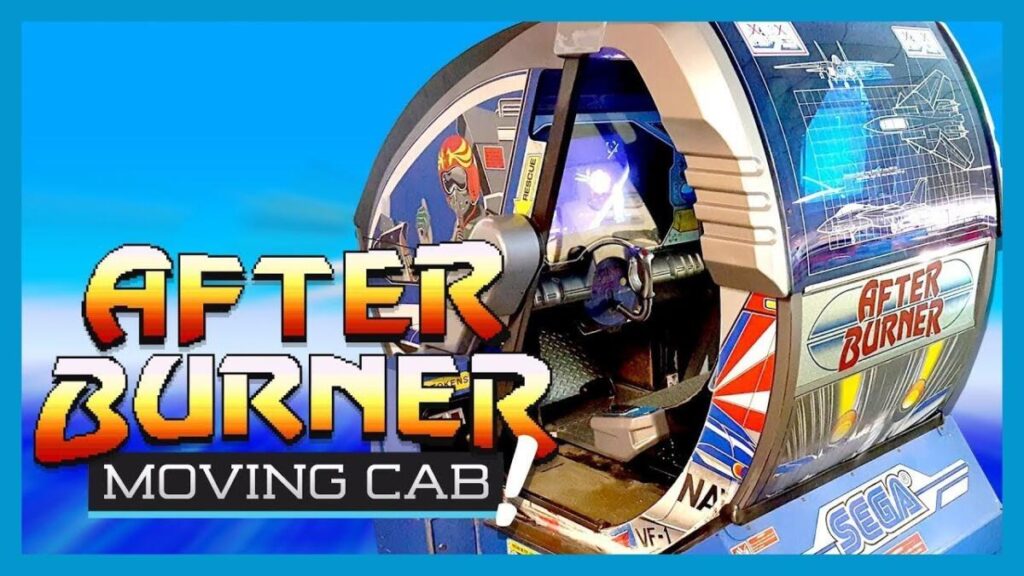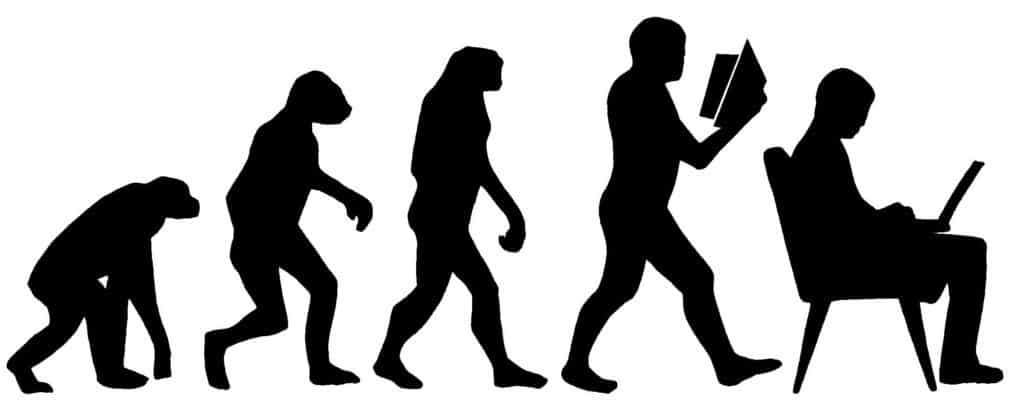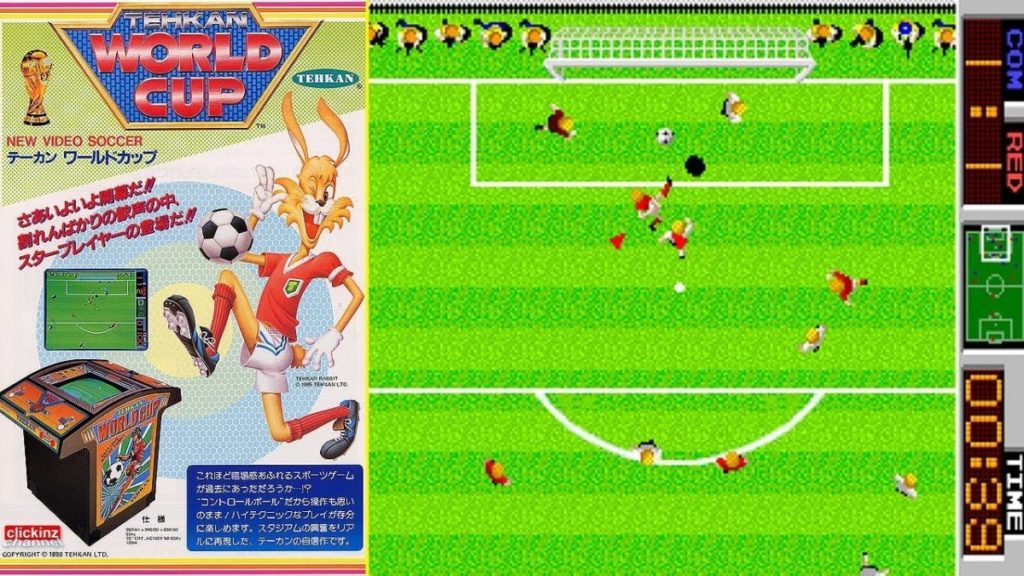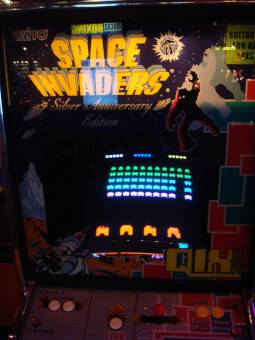Welcome back to 1987, with this year’s long list of classic arcade games being impossible to detail in a single article. Here are some of my favourites.
1987 was a turning point for me and my fascination with the video game arcade. It had been a place of comfort for a good chunk of my young life, but with the arrival of the Sega Master System, home gaming (and in particular World Soccer and Rocky) was becoming the thing, with relatively accurate arcade conversions distracting me away from my first love.
And talking about love, this 13-year-old boy was beginning to learn there was more to life than the smokey arcade halls of Whitley Bay! So it’s with a lump in the throat that, as it turns out, 1987 seems like a good point to end my journey back in time, as it really was the beginning of the end. Tellingly, this year’s list contains the original Street Fighter. An awful game that set the direction for a less innovative, and ultimately doomed future.
I’ll sum it all up next time in the closing chapter, but for now, in the final year of the Golden Age of the Video Game Arcade, we really do have a timeless dream team of entries. Yes, I now owned a Sega system at home, but in 1987, and even now, nothing much could compete with this list of gaming royalty.
R-Type
An all-time classic of near-legendary status. The Daddy. All the best bits of its forebear’s Scramble, Defender, Gradius, and Salamander, plus a smattering of Star Wars/Battlestar Galactica, even Terrahawks. All of my favourite things then, refined to pixel perfection. R-Type is the perfect side-scrolling shooter and never bettered. Why’s it so good?
It’s as though Irem knew the end was coming for the arcade, so they put together this swansong. All the latest tech, plus so much love and detail in the levels and gameplay. Who can forget the detachable Force mechanic, the Giger-esque alien imagery, the rolling musical score, and that mothership level?
It felt like an absolute privilege to be the guy discovering R-Type for the first time in 1987, eagerly inserting 10p and having my mind blown. It was tinged with a little sadness however as it seemed like a peak for the capabilities of the technology at the time. After all these years, the innovation curve was finally lattening.
AfterBurner
No time for such melancholy thoughts with this, as Sega’s AM2 team deliver what had been building for years. AfterBurner, for many, was and always will be the ultimate arcade experience. Let’s look at the ingredients that made it special.
For one. The best cabinet of all time with (kind of) full 360 movement, and speakers blasting out the perfect Top Gun soundtrack and effects. Yup this is 1986’s TopGun, the game, in all but name and they absolutely nailed it. Nothing subtle here, just breathless, seat-of-the-pants aerial combat that never really lets up.
Another legendary classic game. Copied for decades to come. Great name too.
And, at the time of writing, The sequel to Top Gun, Top Gun: Maverick has just premiered in London, 36 years after the original, and 35 years after this.
Now I feel old.
Double Dragon
Scratching my ultra-violence itch for the first time since Exciting Hour (fittingly, also developed by Technōs). Double Dragon was a side-scrolling beat-em-up with a two-player co-op. I will never forget my first impression of this game. Grab your opponent(s) and repeatedly knee them in the head! But the best thing about this game was the teamwork, companionship, and sheer fun of progressing through the levels featuring an assortment of bad guys, including huge Mr. T lookalikes, and having to take on a guy with a machine gun with your fists.
But it wasn’t just your limbs doing the damage, Double Dragon allowed you to pick up various weapons along the way too, baseball bats, knives, and even dynamite! Looking back, it was a bit of a yob simulator, to be honest! I’m not sure kids would have gotten away with playing it today.
At the very end, one of the most memorable and genius twists in the history of gaming. Beat the final baddie in two-player mode and you have to face off against each other to get the girl.
Nope. Gaming moments didn’t get much better than this.
Double Dragon them, not just any old game, but a happy part of my childhood, and a vent for all that pent-up teenage aggression.
Operation Wolf
The game where you got to tote a recoiling Uzi machine gun and be Arnie/Sly in Commando/Rambo. So what’s not to like? Operation Wolf features 5 stages broken up by some nice graphical narrative and an absolute barnstormer of a final stage where you and the hostages attempt to escape via cargo plane, breathlessly chased down the runway by every armoured unit at the enemy’s disposal, and, once in the air, by armed choppers, finishing up with a Hind D gunship!
Operation Wolf was every bit as good as it sounds, but you also got the option of choosing your levels, with the quick route skipping out the opportunity to replenish your health and ammo.
I haven’t talked about this game in over thirty years. It makes me want to play it again.
Shinobi
Well, as you can see from the video. This hasn’t aged well, has it? Still, the importance of Shinobi can’t be overlooked. No Shinobi? No ninja games. I’m talking about the Tenshu series, the various Shinobi sequels, and spin-offs. Here is the original. Probably not the best, but definitely the first…
… and having the ability to switch from ranged weapons (shurikens etc) to hand-to-hand at close range was cool and new.
Looking back. Shinobi wasn’t even all that original, seeming more like a development of something like Kung Fu Master at the time, but hey, I can’t argue with Shinobi’s success, influence, and legacy.
Street Fighter
Now let’s address the elephant in the room. Street Fighter made little impact in the arcades because… …it was a monstrosity! A terrible, clunky game, with awful graphics, losing out to much better competition at the time. I persevered with the nonsensical, stupidly complex, and unreliable arcing and zig-zag joystick motions for a little, before moving back to something more fun.
Little did a know that its sequel would change the face of gaming forever, and for the worse.
In my opinion, Street Fighter, and for that matter Street Fighter II were nothing new, nothing innovative or exciting. It was just another fighting game. But more than that. It went against everything I loved about arcade games at the time.
The video game arcade was an ever-evolving, fast-moving window into the future, with game companies trying to outdo each other for both hardware and software, in a thriving environment. It was healthy competition and a healthy business model. I loved being part of this ‘ahead of the curve’ community.
Fast forward 5 years and arcades would be predominantly occupied with Street Fighter II cabinets with teens expertly twizzling their super-combos or bashing away at a ridiculous number of buttons. We stopped progressing, we stopped caring, and finally, we stopped going, and it breaks my heart.
If Street Fighter didn’t get a sequel (which it didn’t deserve anyway), things may have been a lot different.
Xybots
In contrast, and to finish, we come to a game that demonstrates why I love gaming, and in particular why I loved Atari’s output at the time.
Xybots was interesting for a number of reasons. Firstly, the concept: A two-player, split-screen, first-person, 3D maze, Sci-Fi B-Movie style shooter. Atari was once again pushing the boat out when it came to quirky cabinetry and gizmos in the form of a rotating joystick and a large screen divided into sections a la Punch-Out!
Xybots felt way ahead of its time, a Doom of the ’80s, with its covering, teamwork-style gameplay meshing perfectly with the map displays and the task of mopping up robots.
No, it also hasn’t aged well. But in 1987 this was fresh, exciting, colourful and fun.
Fun fact: The game, developed by Ed Logg, was originally going to be a sequel to another of his, Gauntlet, until Atari decided on a space theme instead.
Other notables
APB (fun top-down police chase behind the wheel), Airwolf (addictive side-shooter from the much-loved TV series), Combat School (Hypesports for the army), Heavyweight Champ (Inferior Punch-Out! clone, but with real swinging punches), Karnov (Atmospheric Russian-themed platformer with great power-ups), Bionic Commando (platforming with the Winter Soldier), Wonder Boy – Monster Land (cartoony platforming with simple but addictive RPG elements) and last but not least, Green Beret (Classic and solid cold-war scrolling beat-em-up/shooter).
Join me next time for the final installment, where I reflect on the end of the Golden Age of the Video Game Arcade.




Interesting
Thanks Justin!